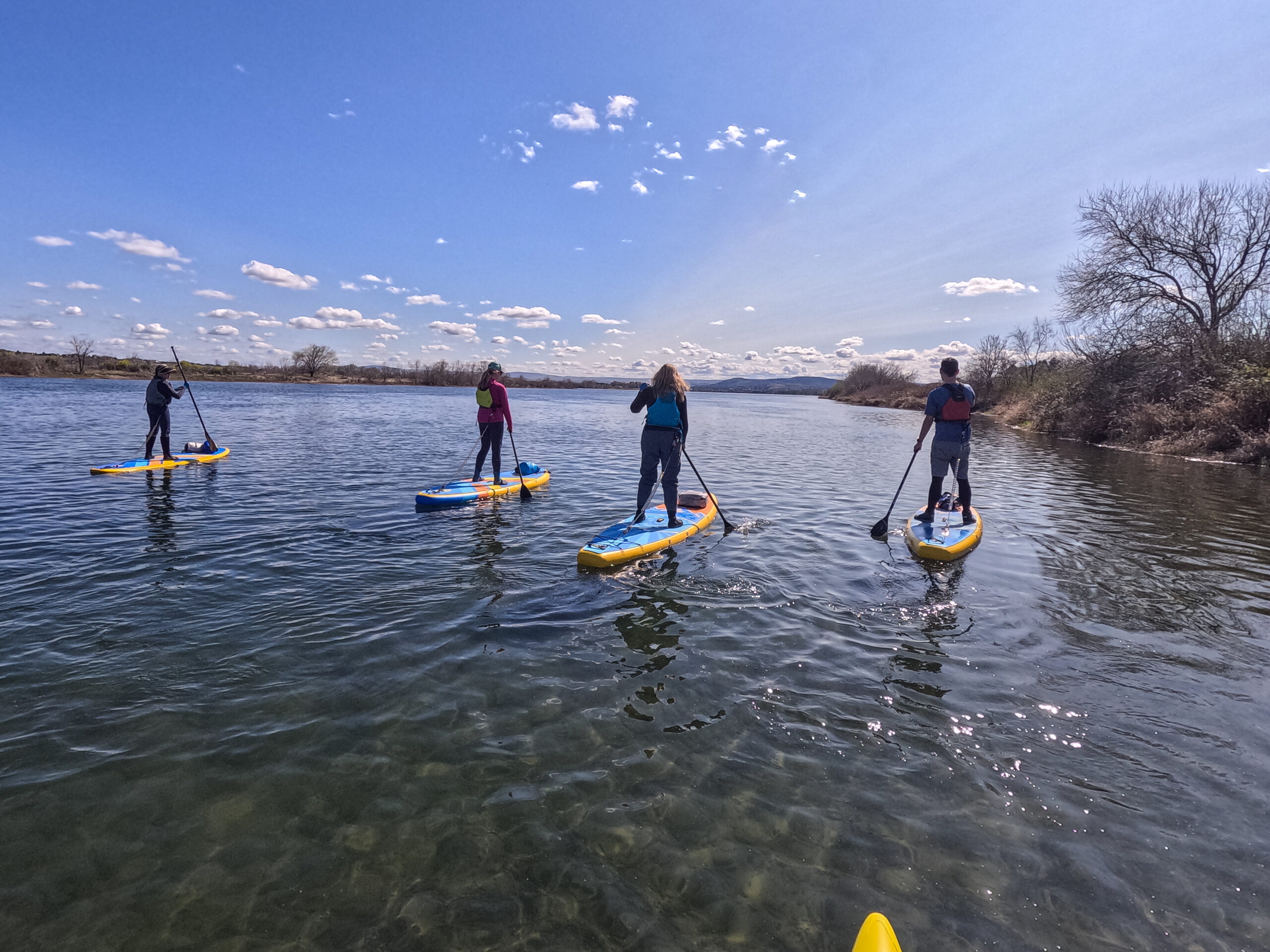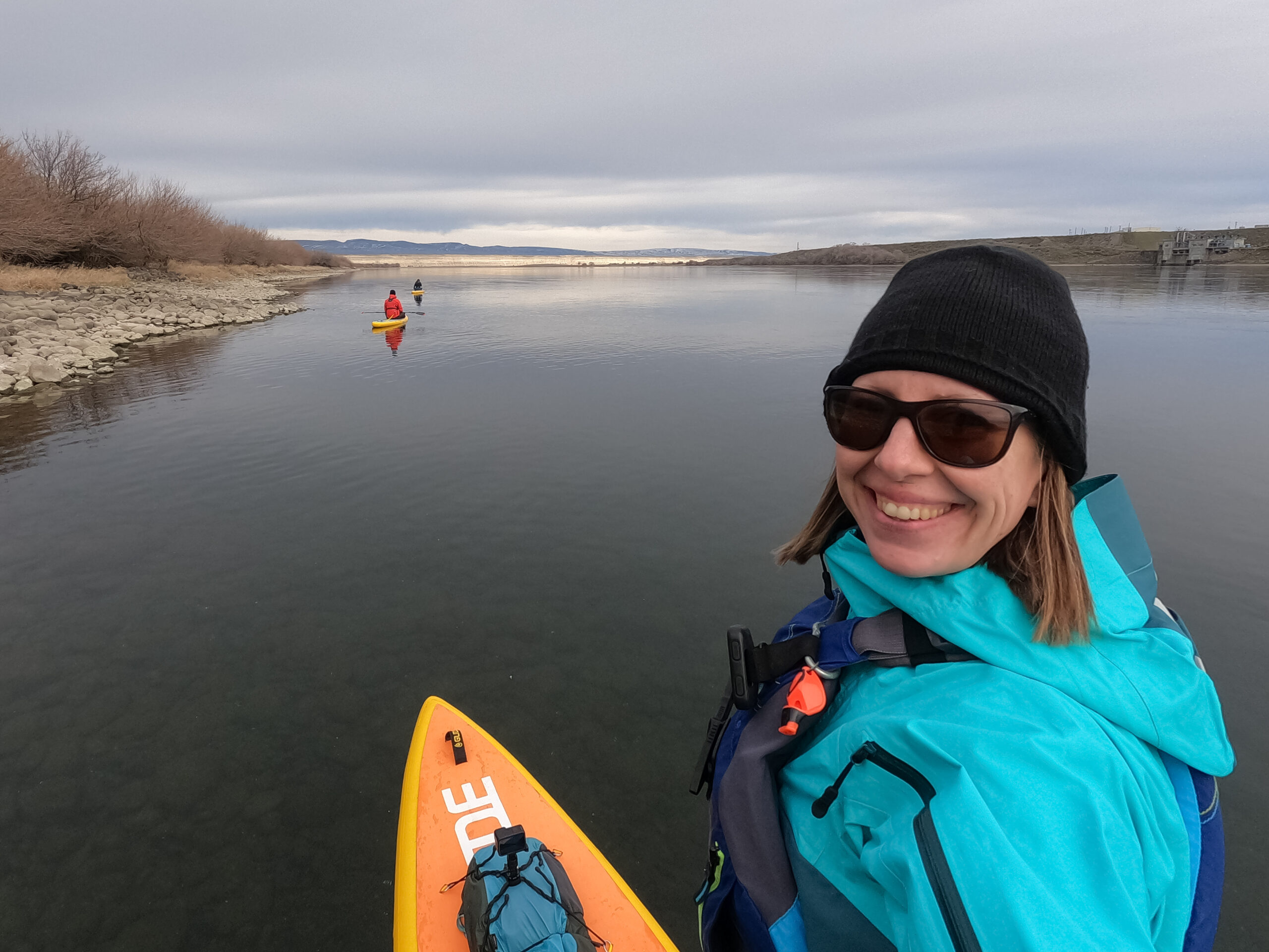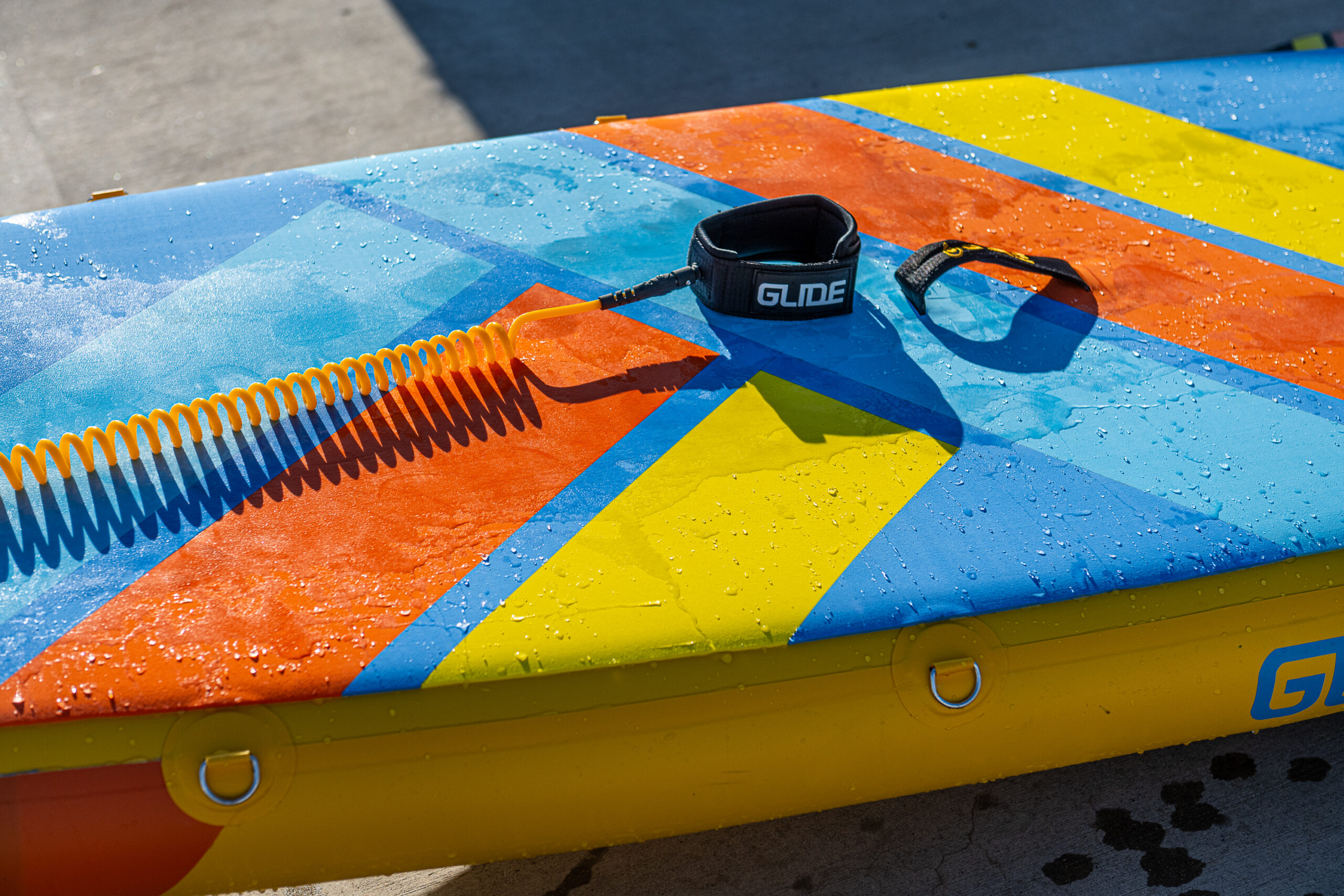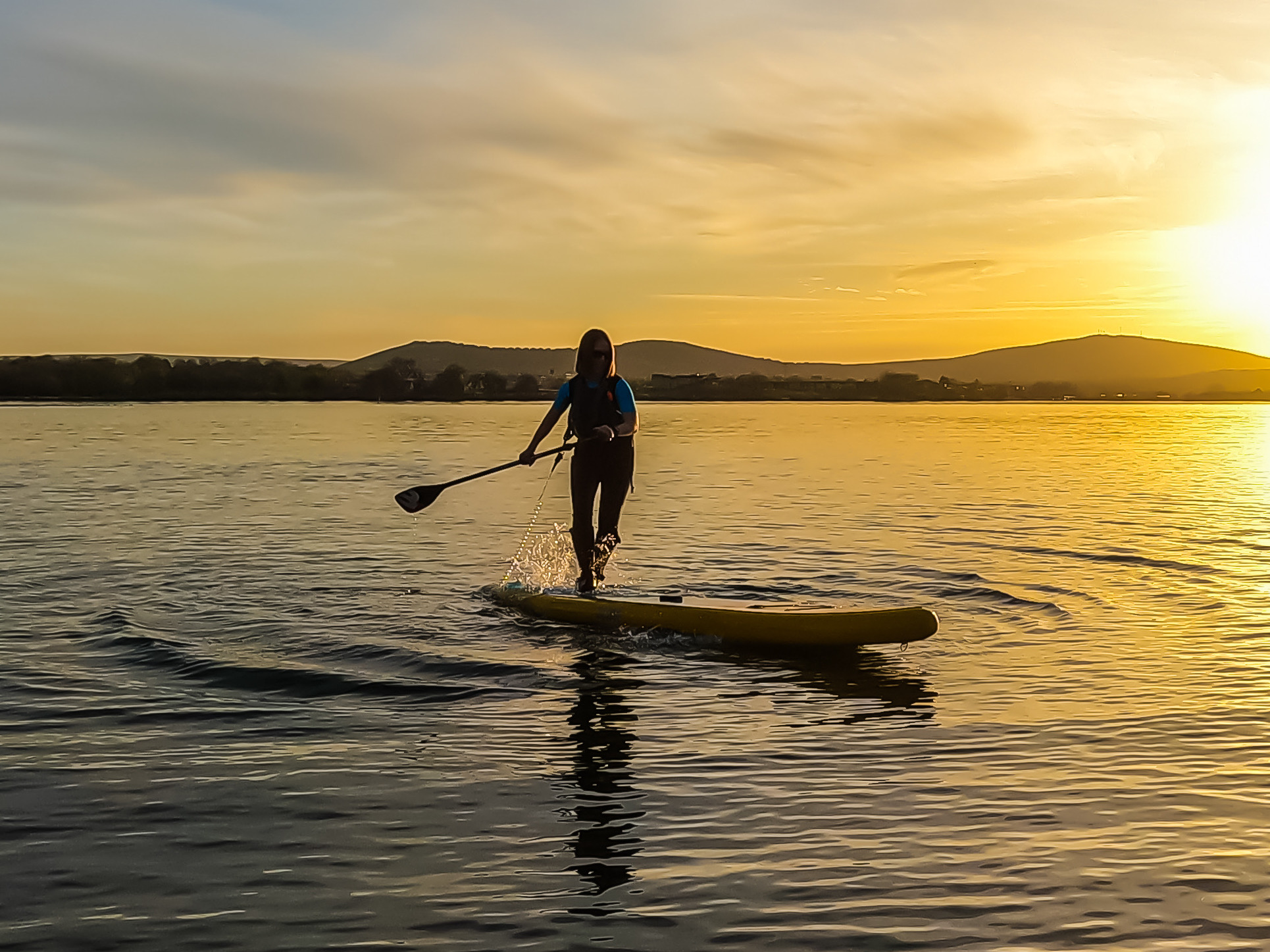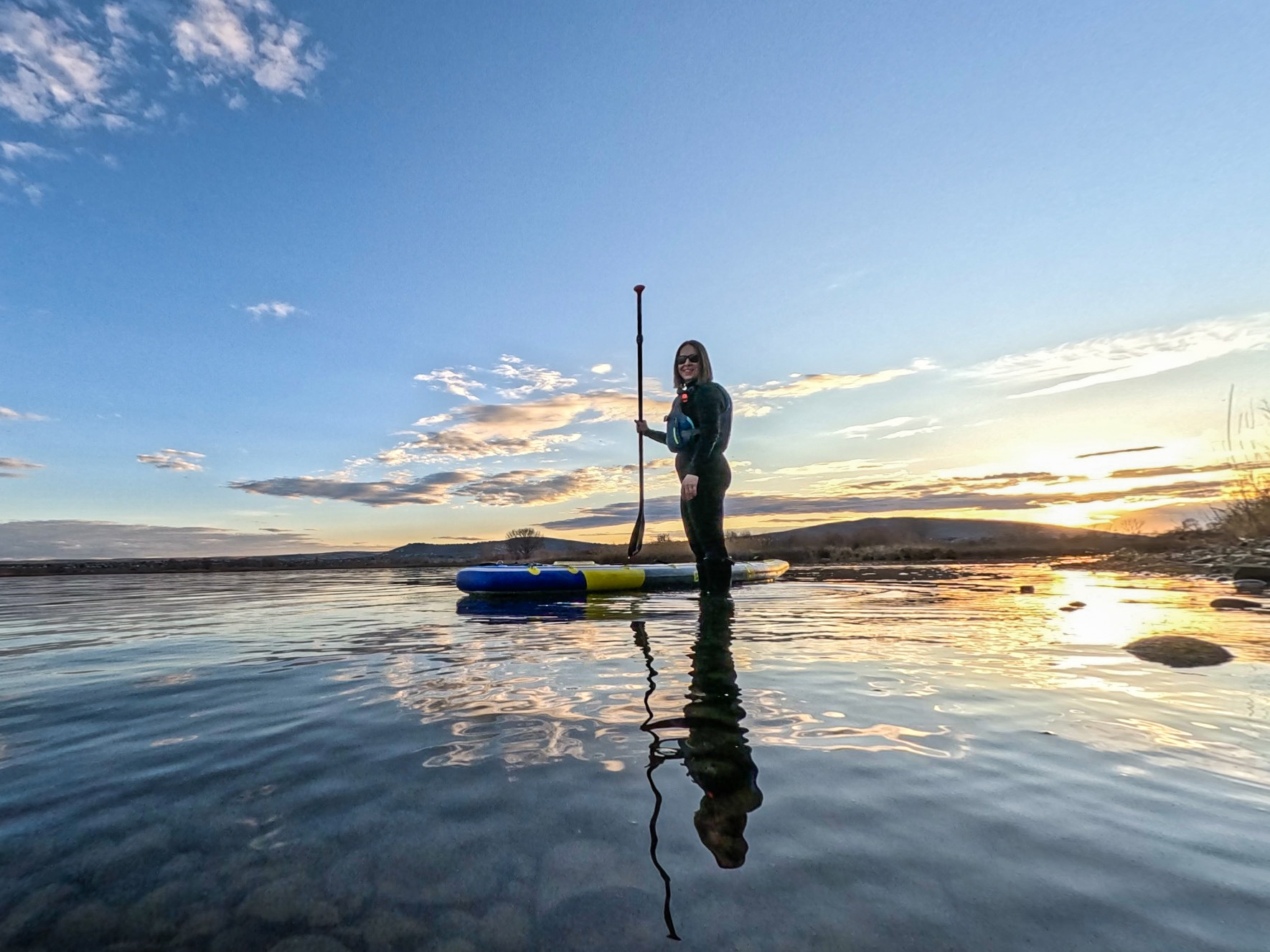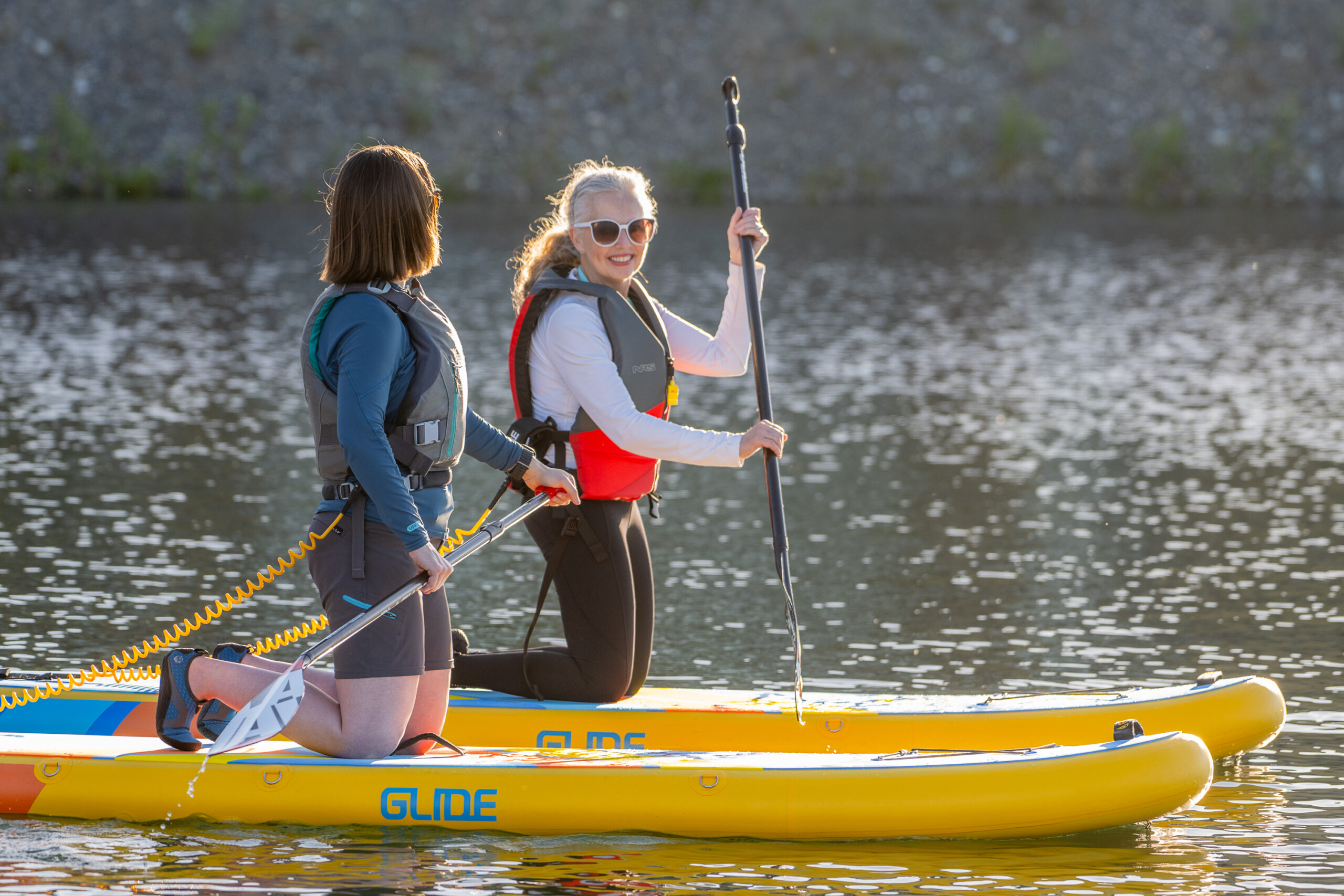Paddleboarding in winter offers a sense of peace and adventure unlike any other season. The stillness of the water, crisp air, and the chance to witness wildlife in its winter habitat make it an incredible experience. But cold-weather paddling comes with unique challenges, and being prepared is key. This guide covers essential safety tips so you can enjoy winter paddling in the Tri-Cities with confidence.
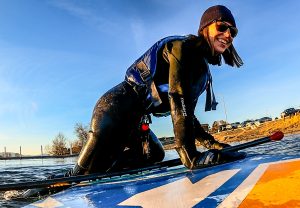
1. Dress for the Water, Not the Air
Wearing the right gear is your first line of defense against cold-water immersion. A drysuit is fully waterproof and designed for layering warmth underneath, while a wetsuit insulates by trapping a thin layer of water your body warms. Avoid relying on the outdated “120 Rule”, which fails to account for cold-water shock. Instead, always dress for full submersion and prepare accordingly.
2. Protect Your Extremities
Your hands, feet, and head lose heat quickly, so proper coverage is essential. Wear neoprene gloves, booties, and a hood or hat to stay warm. Choose gloves with grip-enhancing material for better paddle control, and opt for thicker booties to insulate against freezing water.
3. Wear Safety Gear & Stay Visible
A personal flotation device (PFD) is a must—it provides critical buoyancy in case of immersion. Dress in bright colors to stay visible, especially in areas with boat traffic or hunting activity. Carry a whistle for emergency signaling and a waterproof light or strobe to enhance visibility in low-light conditions.
4. Use a Leash
A quick-release leash keeps you connected to your board, preventing it from drifting away in windy or strong current conditions. This reduces the risk of prolonged cold-water exposure. Always choose a quick-release system for added safety.
5. Check & Pack Your Gear (Essentials)
Before heading out, inspect your board, paddle, and gear for wear and tear. Pack a dry bag with extra layers, a waterproof communication device, a first-aid kit, and an emergency blanket. Bring high-energy snacks, water or a thermos with a warm drink, and a small repair kit for unexpected situations. A compass can help with navigation, ensuring you’re prepared for changing conditions.
6. Practice Self-Rescue
Before paddling in winter conditions, practice getting back onto your board while wearing your cold-weather gear. Cold water can affect mobility, so rehearsing self-rescue techniques in a controlled setting helps build confidence and reaction time.
7. Plan Your Route & Avoid Hazards
Stick to routes close to shore for easy exits if needed. Be aware of Tri-Cities specific hazards, like exposed debris, strong currents, and changing water levels. Avoid remote areas and always file a float plan before heading out. Steer clear of ice patches, partially frozen waterways, and floating debris, which can damage your board and create safety risks.
8. Review Weather & Water Conditions
“Know before you go” is more than a saying—it’s a key safety principle. Check forecasts and water temperatures before launching. Monitor river gauges to understand current flow and water levels. For those paddling the Columbia River, check Priest Rapids and use Windy / The Weather Channel to assess conditions. Be flexible with your plans if the weather turns.
9. Avoid Paddling Alone
Paddle with an experienced companion or group whenever possible. If paddling solo, share your float plan with someone and carry emergency communication, such as a personal locator beacon (PLB), emergency satellite device, or VHF marine radio. Having a reliable way to call for help is crucial in cold conditions.
10. Know Your Limits & Manage Cold Exposure
Limit your time on the water to avoid prolonged cold exposure. Learn to recognize cold shock (gasp reflex, disorientation) and hypothermia (shivering, numbness, confusion). If you start feeling sluggish or disoriented, get to shelter and warmth immediately.
Stay Safe & Paddle On This Winter
Looking to sharpen your winter paddling skills? Aqueous SUP offers winter-specific safety classes and guided paddles. Whether you’re looking to build confidence or explore new waterways with an experienced group, we’ve got you covered.
Remember: Know before you go—and if in doubt, don’t go out. Safety always comes first, and proper preparation makes all the difference. Reach out today and make this winter your most adventurous yet!
